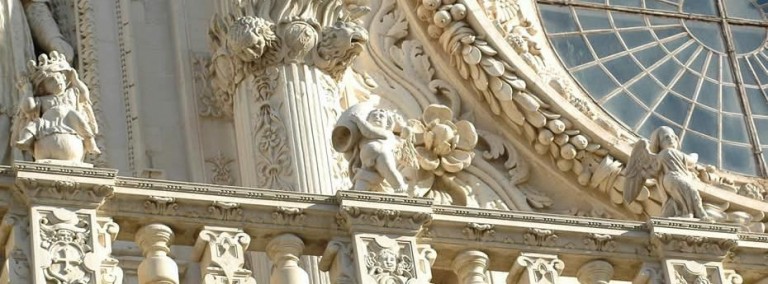
Not only is Salento sea, but also art. The inland is multifaceted. The hundreds of towns of Salento give life to an infinite series of small and big squares, thousands of alleys, undoubtedly charming palaces and churches stand out, whose facades are skilfully worked by chisellers, like Salandra square in Nardò surrounded by baroque buildings, together with galleries and balconies in the middle of which the spire dedicated to the Virgin Immaculate stands out, or the Cathedral where the black woody Spanish thirteenth-century Crucifix is. Galatone where the sanctuary of the Crucifix oh the Mercy is, one of the so many masterpieces by Giuseppe Zimbalo, the father of Lecce baroque.
Galatina, wonderful town, that, together with Nardò, Gallipoli and Maglie is part of the so called "minor baroque". Among itsa artistic jewels it boats the Minor Basilica of S. Caterina d'Alessandria, built according to the Romanesque-Gothic style only in seven years. Its interior is made of five naves frescoed following the Giotto style. Particularly attracting seventeenth-eighteenth-century palaces face along its streets, therefore walking without giving a look above not to lose any single particular is difficult. No main door, balcony or window is similar to the other, silent witnesses of a rich past. A few less than one km from Galatina, in the heart of Salento, Grecìa Salentina, made of nine towns: Calimera, Castrignano dei Greci, Corigliano d'Otranto, Martano, Martignano, Melpignano, Soleto, Sternatia and Zollino starts. Here Griko, a dialect close to the ancient Greek is spoken.
Grecìa is made of aristocratic palaces, court houses with an uncovered space in common for several familiar groups. Grecìa, like all the other towns of Salento, is characterized by the presence of dolmens and menhirs, reservoirs or pools collecting rain-water, the so called ta fréata, in Soleto, Martignano and Castrignano. All this explains why Salento welcomes an elite tourism asking not only for a sea holiday, but for more, much more.


